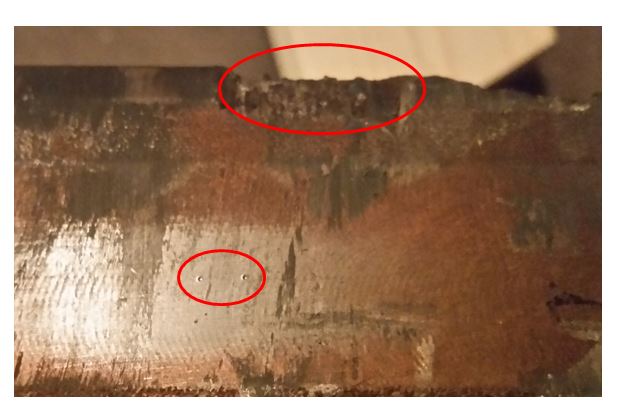As Poison Arrow debuts on tonight's episode of ABC's BattleBots, learn about what materials were used to create this "beast".
Engineers often say that there are no bad materials, only improper uses. With such a vast selection of metals, plastics, ceramics and composites, it’s vital to understand the strengths and weaknesses of each when used in any particular application - Just because diamond is one of the hardest materials known to man doesn’t make it a good choice for a BattleBot. Let’s take a closer look at material selection for the business end of Poison Arrow, the 70lb hunk of destruction that is the drum weapon.

The basic principle of the drum is to store a large amount of kinetic energy in a spinning cylinder that is then transferred into the opposing robot to throw it into the air. In order to toss another robot, the edge of the drum must be strong enough to dig into the opponent’s armor without deforming, and strong enough to stand up to the immense impact forces that are generated when a 250lb machine accelerates to ram.
When picking the best materials, many people not familiar with the science focus on strength alone—given that we’re talking about units of pounds per square inch, wouldn’t the material that could withstand the most pounds per square inch be the best? Unfortunately strength and toughness are mutually exclusive. As the strength of materials increases, their molecular bonds become so rigid and inflexible that they cannot deform much before shattering. If a part cannot deform, it can’t absorb much energy and won’t be very tough. The challenge was to pick a material for the drum that is only slightly stronger than what most opponents use for armor. That way Poison Arrow’s weapon preserves as much toughness as possible and stays comparatively shatterproof. From the chart below, you can see that high alloy steels are the strongest material group that still has decent toughness. Fortunately since alloy steels are dense, not many people can use them for armor and still have an effective weapon due to the 250lb weight limit.

The category for high alloy steels comprises several thousand different kinds of alloys tailored to everything from building race car frames to slicing tomatoes, but the selection can be quickly narrowed by what alloys are readily available in useful shapes for reasonable prices. Caustic Creations scraped together a quick and dirty list of high-strength vs. toughness to help them make a decision. Note that high-strength steels are measured in hardness as opposed to tensile strength because both measurements can be easily converted for steels but the hardness test (done by measuring the size of indentation left by an ultrahard BB forced into the test metal) is much simpler to perform, doesn’t break the test piece, and gives more consistent measurements on extremely high strength metals that run the risk of failing due to unpredictable fractures.
Caustic Creations ended up choosing S7 steel for the drum, which has one of the higher tensile strengths while still retaining some impact toughness and being reasonably affordable. It’s a common material used in tools exposed to big impacts such as axe heads and jack hammers—the S stands for shock. It also has heritage in many other BattleBots such as Tombstone, HyperShock and Witch Doctor. Unfortunately S7 is prone to fracturing so it is important to design the drum in a way that disperses the impact forces through the metal smoothly and engages as much material to absorb the impact energy. Stress flows like water through metal. It piles up at narrow channels and sharp corners and when it exceeds the metal’s capacity, it causes cracks and fractures the metal. Poison Arrow’s drum was machined from one solid bar with a final shape that that was as thick as the weight budget allowed and that also removed all corners.

The “no sharp corner" rule also makes it difficult to effectively use S7 steel as frame or armor, since framing and armoring typically requires small cuts and corner connecting features in assembly, which would weaken the integrity of the steel. This is actually good news for Poison Arrow. We can be reasonably sure that no opponent’s armor will be stronger than the S7 drum.

Caustic Creations tried to use S7 steel for framing, but it shattered in design.
One final consideration, all alloy steels are normally bought in the annealed or soft condition, pre-machined. They then have to be heat-treated to become hard. Depending on how the heat treatment is performed, the metal can end up with a range of strengths at the expense of toughness. Some lower carbon steels like 4140 or 4340 can be easily treated with nothing more than a coal fire and water bucket but the higher carbon that allows S7 to get much harder also makes it prone to cracking if the heat treat process is not carefully controlled and performed by a professional treater, preferably with a vacuum furnace to prevent oxygen from oxidizing the surface of the steel—which wrecks the precision bearing bores and robs surface carbon that is vital to making the metal hard and strong. So what is the optimal treatment?

From this chart of S7’s hardness vs toughness, we see a sweet spot at around 55-57 HRC. Any softer or harder and the impact strength dips. Poison Arrow’s drum was treated with an aim of an HRC of 56. In this last picture you can just barely make out two small indentations where the heat treater performed a hardness test on the drum tooth. This is post-fight, so you can also see the chipped edges of the drum. During fights the drum did get fractured, but the fractures were localized due to the large volume of metal. The stresses quickly spread out and dissipated to prevent the whole drum from cracking and breaking apart. The drum dished out some massive hits without ever failing catastrophically, but only because the right material was chosen, and it was treated correctly.




